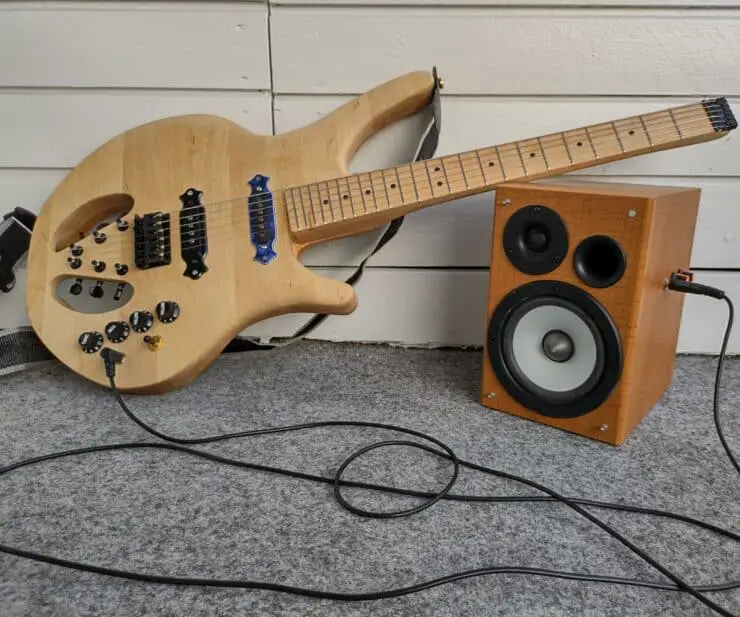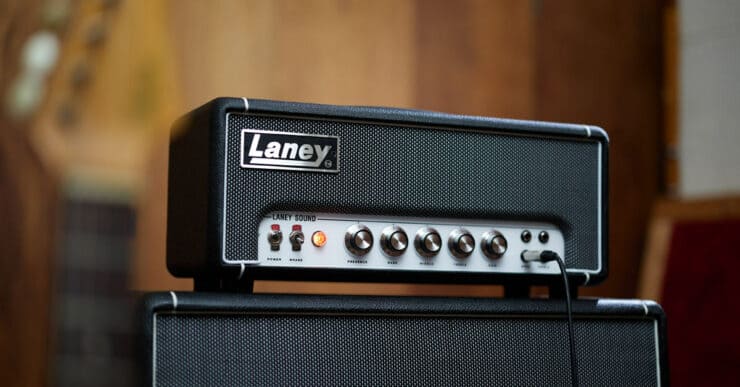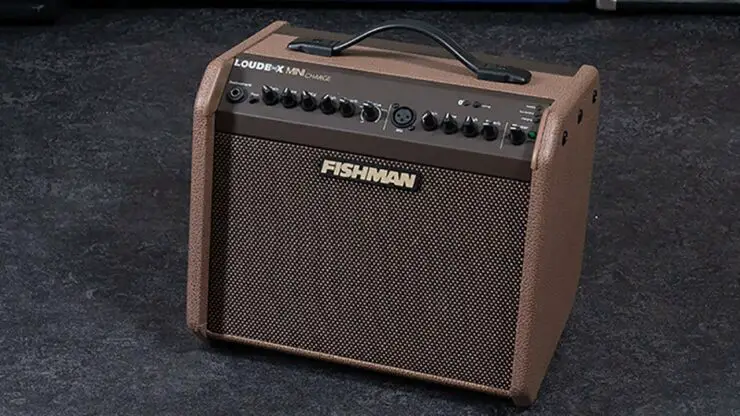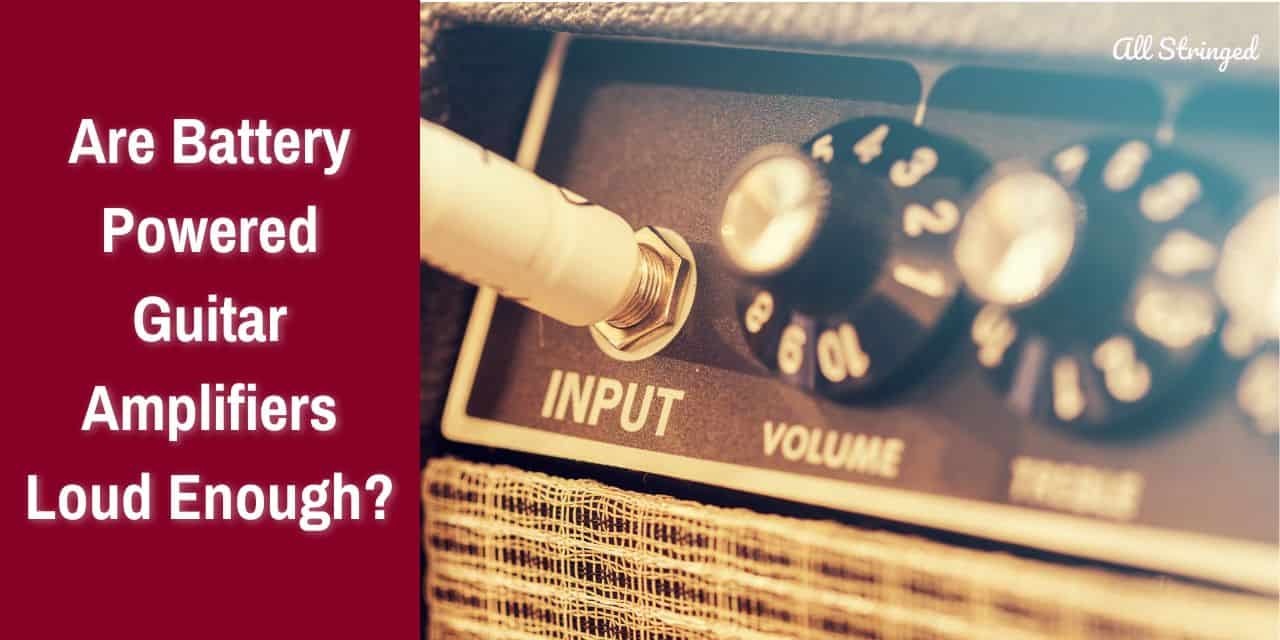Guitar players, have you ever wondered if battery powered guitar amplifiers are loud enough for your needs? Whether you’re a beginner or a professional musician, you’ve likely encountered the debate over battery powered versus traditional amplifiers. In this article, we’ll explore the advantages and disadvantages of battery powered guitar amplifiers and help you decide which is right for you. Read on to learn more and discover if battery powered guitar amplifiers are loud enough for your needs.
How do Battery-Powered Guitar Amps work?
For musicians and guitarists who are always on the move or the ones looking for portability without compromising on sound quality, battery-powered guitar amps have become the next best thing. These compact amps offer the freedom to play without being tethered to a power outlet.
Battery powered guitar amps are the compact amplifiers designed to run on batteries. This makes them a highly portable alternative to traditional mains-powered amplifiers. They are perfect for musicians and guitarists who need mobility, such as street performers, buskers. They are also great for guitarists who have to play in outdoor settings where access to electricity is limited or unavailable.
As the name suggests, the primary characteristic of a battery-powered guitar amp is its ability to work without being plugged into a power outlet. These amplifiers are typically powered by disposable batteries (e.g. 9V or AA) or rechargeable batteries. They are able to deliver varying levels of playtime depending on the battery time and amp model.
>>> Click here to read our review about the Top 15 Best Battery Powered Guitar Amps <<<
To maintain portability, battery-powered guitar amplifiers are designed with power-efficient components. Solid-state amps are commonly used in such amps due to their lower power consumption compared to tube amps. Solid-state amps make use of transistors to amplify the guitar signal, providing a clean and reliable sound while consuming less energy.
Inside a battery-powered guitar amp, the circuitry is designed to process the incoming guitar signal and amplify it to an audible level. This involves several stages, including pre-amplification, tone shaping, and power amplification.
Most battery-powered guitar amps have basic control features such as tone, volume, and sometimes gain controls. Some models might offer additional features like built-in effects (delay, reverb, chorus) or EQ options for customizing the sound further.
The amplified signal is then delivered to the player’s ears via a built-in speaker. Given the limited size of these amps, the speakers are generally smaller than those found in larger mains-powered amplifiers. However, advancements in technology have allowed manufacturers to achieve impressive sound quality and projection even with compact speakers.
The battery life of a battery-powered guitar amp will vary depending on the amp’s power rating, usage, and battery type. Models with lower wattage and energy-efficient components typically offer longer battery life. It is common for these amps to provide several hours of playtime on a single set of batteries but it can vary significantly from one model to the other.

Are battery powered guitar amplifiers loud enough?
Battery-powered guitar amplifiers have become the go-to solution for guitarists looking for versatility and mobility. Whether it is busking on the street corners, playing in remote locations, or practicing on the go, these compact amps offer musicians the freedom to perform without being tethered to power outlets. However, there is one common concern among musicians and guitarists – are battery powered guitar amplifiers loud enough?
The loudness or volume of a battery-powered guitar amp is determined by several factors, including the amp’s wattage, design, and speaker size. While battery-powered guitar amps generally have lower wattage compared to mains-powered amplifiers, they can still produce significant volume levels ideal for various performance scenarios.
Battery-powered guitar amps typically range from 1 to 20W, with some models offering higher wattage options. Smaller amps in the 1 to 5W range are often suitable for practice sessions and intimate performances in low-volume settings. Meanwhile, amps with wattages in the range of 10 to 20W can deliver enough volume for small gigs and rehearsals.
It is important to consider the amp’s intended use when choosing a battery-powered guitar amp. If it’s primarily for personal practice, lower wattage might be sufficient whereas higher wattage is preferred for performance settings where more volume is needed.
Measuring the sound levels of a battery-powered guitar amp will be important for ensuring proper volume control and preventing potential hearing damage. The common tool used for measuring sound levels is a sound level meter or also referred to as a decibel (dB) meter. Sound level meters come in different forms, from handheld devices to smartphone apps. They can be calibrated for accurate readings. When measuring the sound level of a guitar amp, there are certain steps to follow.
First, place your battery-powered guitar amp on a stable surface. After that, you should position it at a height similar to how it’ll be used during performances or practice. Then adjust the amp’s volume control to the desired level for measurement. Remember that sound levels will vary depending on the amp’s settings and the type of guitar you are using.
Place the sound level meter at the position where your ears will typically be during performance or practice. Make sure that the mic is not obstructed and is facing the amp directly. Activate the sound level meter and let it capture the average sound level over a specific time period. The reading will get displayed in decibels (dB).
Continuously monitor the sound levels without playing to make sure they stay within safe limits. The recommended safe sound exposure for musicians is generally around 85dB but prolonged exposure to sound levels above that could cause hearing damage.
Comparing sound levels of battery-powered guitar amps and mains-powered amps
Whether you’re a seasoned veteran or a beginner guitarist, guitar amps play a vital role in shaping the sound and tone of your performance. With advancements in technology, you now have a plethora of options, including both battery-powered and mains-powered amps. Each type comes with its distinct advantages but one important factor that guitarists often prioritize is the volume of sound levels. It is important to compare the sound levels of battery-powered guitar amps and mains-powered amplifiers to help you make a smarter choice. Here is how battery-powered and mains-powered amps compare in terms of sound levels.
Wattage and volume output
One of the main factors influencing the volume of an amp is its wattage rating. Typically, mains-powered amplifiers tend to have higher wattage ratings than battery-powered amps. Mains-powered amps commonly range from 15 to 100W or more, as they offer substantial volume capabilities suitable for large venues and stage performances.
Meanwhile, battery-powered guitar amps typically have lower wattage ratings, ranging from 1 to 20W. While they might not match the volume output of mains-powered amps, battery-powered ones are often enough for practice sessions, small gigs, and intimate performances.
Speaker size and efficiency
The size and efficiency of the speaker in an amp also impact its sound levels. Mains-powered amps generally feature larger speakers, which allow them to move more air and produce a significant volume output. Moreover, mains-powered amps often come with multiple speakers, contributing to their overall power and volume capabilities.
Due to their compact size, battery-powered guitar amps often come with smaller speakers. However, advancements in speaker technology have made it possible for manufacturers to design efficient speakers that deliver impressive sound quality and projection despite their size.
Power source limitations
The power source is a vital aspect that differentiates battery-powered amps and mains-powered amps. Mains-powered amplifiers feature a constant and stable power supply from an electric outlet, allowing them to operate at their rated wattage consistently.
Battery-powered guitar amps, as the name suggests, rely on batteries for their power source. While batteries offer portability and freedom from power cords, they might not sustain the same consistent power output for extended periods compared to mains-powered amps. Battery life, amp settings, and the type of batteries used can affect the sound level and playtime of a battery-powered amp.
Sound quality and tone
Beyond volume, sound quality and tone are important considerations for guitarists. Both battery-powered and mains-powered amps can deliver excellent sound quality, depending on the brand and model. Mains-powered amps might offer more tonal versatility, with larger cabinets and additional features like built-in effects, EQ options, and multiple channels.
Battery-powered guitar amps also produce a pleasing sound and are often designed to replicate the tonal characteristics of larger amps. They might be simpler in terms of features but their compact size and portability make them an attractive prospect for specific performance scenarios.
Benefits of battery-powered guitar amps
The world of music is constantly evolving and musicians are always looking for the next innovative tool to enhance their performances. In recent years, one of the most impressive musical tools to have emerged is the battery-powered guitar amp. It has been a game-changer for musicians and guitarists looking for convenience and flexibility. These lightweight and compact amps offer an impressive range of benefits that cater to the needs of musicians and guitarists on the move. Here are some of the benefits of battery-powered guitar amps.

Mobility and portability
Perhaps the most apparent benefit of a battery-powered guitar amp is its portability and mobility. With no need for a power outlet, you can easily take this amp anywhere you go. Whether you’re playing at a park, beach, street corner, or even in a remote location, the battery-powered guitar amp will offer the freedom to perform without the constraints of power cords. Musicians who travel frequently or perform in outdoor settings find portability especially advantageous. It allows them to share their music wherever inspiration strikes.
Versatility in performance locations
A battery-powered guitar amp is ideal for buskers and street performers who rely on their instruments for impromptu performances. The convenience of these guitar amps means that guitarists can easily set up and play in a matter of seconds. They are capable of offering a professional sound experience to passersby without needing access to electricity. Moreover, these amps are equally suitable for small indoor gigs, rehearsals, or jam sessions in locations without access to power.
Option to practice anywhere
Battery-powered guitar amps are not only useful for live performances but also for practice sessions. Musicians can take their amps to any corner of their house or studio or to a secluded outdoor spot for uninterrupted practice. This flexibility will allow the guitarist to fine-tune their skills without being confined to a single practice space.
Energy-efficient and environmentally friendly
Battery-powered guitar amps are designed to be energy-efficient, using solid-state circuitry that consumes less power than traditional tube amps. This feature prolongs the battery life, allowing musicians to play for extended periods without frequent battery changes or recharges. Moreover, using rechargeable batteries or eco-friendly alternatives will help reduce environmental impact, making these amps a sustainable choice for environmentally conscious artists.
Suitable for low-volume settings
Battery-powered guitar amps often have lower wattage compared to larger mains-powered amplifiers. This makes them perfect for low-volume settings, such as small acoustic performances or bedroom practice. Guitarists can achieve a satisfying tone at lower volumes, making it convenient for late-night practice sessions or intimate gigs in small venues.
Factors that affect sound levels in a battery-powered guitar amp
Battery-powered guitar amps offer guitarists the freedom to perform in any setting without feeling they need to be tied to a power outlet. However, understanding the factors that influence the sound levels in a battery-powered guitar amp is important for achieving the perfect balance of tone and volume. Here are some of the factors that play a crucial role in shaping the sound levels of battery-powered guitar amps.
Speaker size
The size of the speaker in a battery-powered guitar amp directly affects its volume and overall sound quality. It is a common misconception that bigger speakers always produce louder sounds. While larger speakers can move more air and generate more volume, the efficiency and design of the speaker are equally significant.
Battery-powered guitar amps often have smaller speakers due to their compact size and portability. However, the guitar amps these days come with much more efficient and powerful speakers, allowing these amps to deliver impressive sound levels and projection despite their smaller size.
Power rating
The power rating of an amp, measured in watts, plays a key role in determining its volume capabilities. Generally, higher wattage ratings produce more volume but finding the right power rating for a battery-powered guitar amp will be important to avoid excessive weight and power consumption.
Battery-powered guitar amps typically have lower wattage ratings. Wattage in the range of 1 to 20W is quite common for these amps, making them ideal for practice sessions and small gigs. It is important to choose an amp with an appropriate power rating that suits the intended use and venue size.
Tone controls
Tone controls, such as bass, treble, and mid knobs, allow guitarists to shape the overall sound of their amp. These controls influence the frequency response of the amp, affecting the warmth, brightness, and overall tonal character.
These amps may come with simplified tone controls due to their compact design but they still offer the ability to shape the sound to an extent. By adjusting the tone controls, guitarists will be able to tailor the amp’s sound to compliment different playing styles, guitars, and genres.

Effects
Many battery-powered guitar amps come with built-in effects, such as delay, reverb, chorus, and more. Effects can add depth and dimension to the sound, creating a much more immersive and captivating performance.
The inclusion of effects in battery-powered amps allows musicians and guitarists to experiment with different sounds without the need for external pedals. While some amps might have a limited selection of effects, they still offer an extended layer of versatility to enhance the overall sound experience.
Tips to get the most out of your battery-powered guitar amp
A battery-powered guitar amp will open up a plethora of musical possibilities, allowing you to perform and practice on the go without being tethered to a power outlet. While these portable amps are known for their convenience, they also offer an impressive range of tone controls and built-in effects to enhance your sound. Here are some of the tips you should consider to help you get the most out of your battery-powered guitar amp.
#1. Master the tone controls
Tone controls are the key to shaping the overall sound of your guitar amp. Most battery-powered guitar amps come equipped with basic tone controls, such as bass, mid, and treble knobs. To make the most of your guitar amp, you should adjust the bass, mid, and treble controls to tailor the sound.
Adjusting the bass control will allow you to enhance or reduce the low-frequency response, increase the bass for a fuller and warmer sound, or decrease it for a tighter and punchier tone. The mid control will affect the mid-range frequencies, which are important for defining the character of your sound. Boost the mid for more presence and a cutting sound, or cut the mid for a scooped, modern tone.
The treble control will control the high-frequency response. Turning it up will add brightness and clarity to your sound while dialing it back will create a warmer and smoother tone. Experimenting with the tone controls will allow you to discover the perfect balance for your playing style, guitar, and musical genre.
#2. Harness the built-in effects
Many battery-powered guitar amps feature built-in effects, such as delay, reverb, chorus, and more. Utilizing these effects will add depth, dimension, and atmosphere to your sound. Adding reverb to the sound will simulate the natural ambiance of different spaces. Use it subtly for creating a sense of space or dial it up for a lush, atmospheric sound.
Delay will create an echo effect, adding a sense of space and dimension to your sound. Experiment with short slapback delays for a classic touch or longer delays for ethereal and spacious tones. Chorus will add a shimmering and modulated effect to your sound. It will be great for thickening your tone and creating a lush, swirling sound.
Depending on your guitar amp, you might be able to access other effects like phaser, tremolo, and more. These effects offer unique textures and can inspire creativity in your playing.
#3. Find the sweet spot with settings and volume
Every battery-powered guitar amp features a sweet spot, which is a combination of settings that brings out the best in your sound. Experiment with different combinations of volume, tone controls, and effects to find the balance that suits your preferences.
You should remember to consider the environment in which you’re playing. These amps are excellent for intimate settings and smaller gigs, so adjusting the settings accordingly will ensure that your sound is well-suited to the venue.
#4. Dial in the right gain
If your battery-powered guitar amp has a gain or overdrive control, it is important to master it for achieving the right amount of distortion in your sound. Gradually increase the gain for achieving anything from a mild crunch to full-on distortion.
By balancing the gain with the amp’s volume and tone controls, you’ll be able to create a wide range of distorted tones that suit different playing styles and musical genres.
FAQs
What type of guitar amplifiers are battery powered?
Battery powered guitar amplifiers are typically portable, compact amplifiers that use either batteries or a wall adapter for power. These amplifiers are typically used for practicing on the go or in other environments where access to a wall outlet may not be available.
Are battery powered guitar amplifiers loud enough?
The loudness of battery powered amplifiers can vary depending on the wattage, size of the speaker, and other factors. Generally, they are not as loud as regular amplifiers, but they can still provide ample volume for practice purposes.
What are the benefits of using a battery powered amplifier?
The main benefit of using a battery powered amplifier is its portability. This makes them ideal for practicing in a variety of environments, including outdoors and on the go. Additionally, they are often more affordable than regular amplifiers, making them a great option for budget-conscious guitarists.



